Dear John,
Note: This page is advice for Grace, Jude and John. For any other reader, it’s information only. No therapeutic relationship is formed – read this.
Before I go through the highlights, you should read the full research paper I was lead author on. It goes through:
- CGM device selection
- Structured education program development
- The research underpinning Dynamic Glucose Management strategies
- The results of the first fifty children and young people with type 1 diabetes educated in Dynamic Glucose Management
Check it out.
CGM device selection
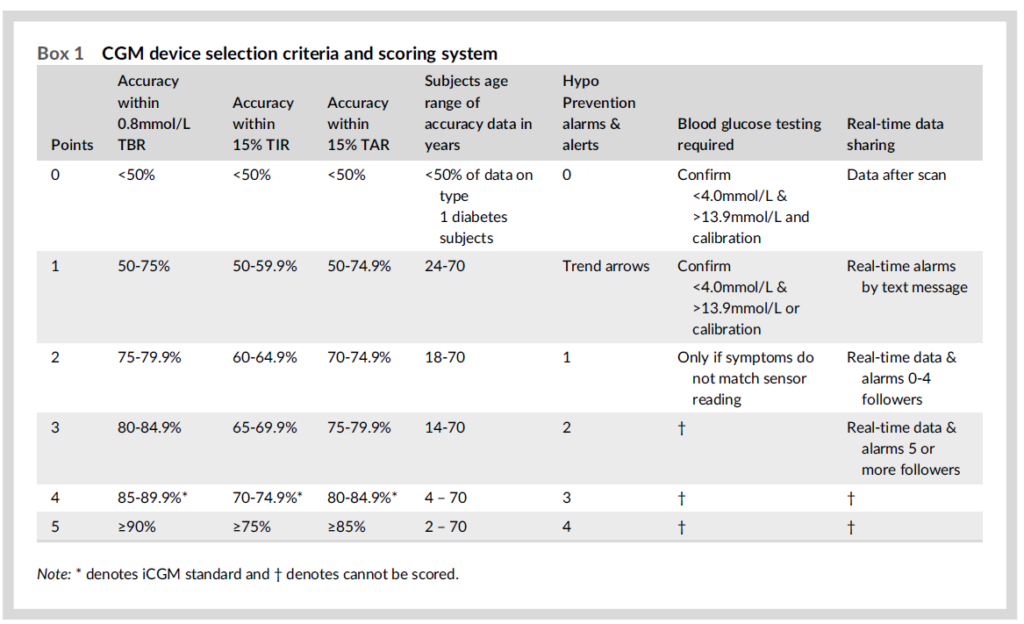
Box 1 from the research paper shows how to evaluate a CGM device. Accuracy should be measured in TBR (time below range, <3.9mmol/L or 70mg/dL), TIR (time in range , 3.9-10.0mmol/L or 70-180mg/dL) and TAR (time above range, >10.0mmol/L or 180mg/dL).
Accuracy measures such as MARD that average accuracy across the whole glucose range and meaningless. For a CGM device to achieve the gold standard in accuracy, iCGM status in America, it must be very accurate in TBR, TIR, TAR. Only the Dexcom G6 and Libre 2 have iCGM status (April 2021). The other devices, with exception of Eversense, do not even come close!
CGM devices cannot just be accurate. They must be useable in terms of hypo prevention, minimal blood glucose testing required and data sharing capability.
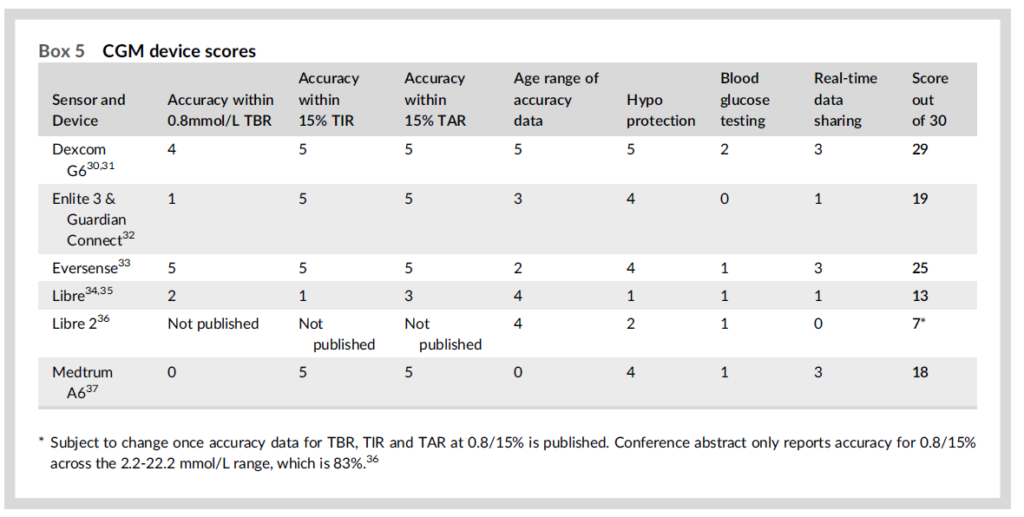
Box 5 shows the Dexcom G6 was the clear winner with a score of 29 out of 30! That’s why it was chosen as the only device we used. When this paper was submitted, the Libre 2 accuracy data had not been fully published, hence the score of 7 out of 30. Since that time a published accuracy paper showed exceptional accuracy taking the score to 27 out of 30.
In my opinion the Dexcom G6 and Libre 2 are the only devices accurate enough to truly rely on.
My personal bias is toward the Dexcom G6 for several reasons;
- It has a predictive low alert, the Libre 2 does not.
- There is an option of calibrating if the sensor is inaccurate, the Libre 2 does not.
- You see the data in real-time, the Libre 2 requires a scan.
- Door frames always knock off my Libre sensor.
- Finally, I trialled them head to head over10 days. The Dexcom G6 was clearly more accurate, FOR ME.
Structured education program development
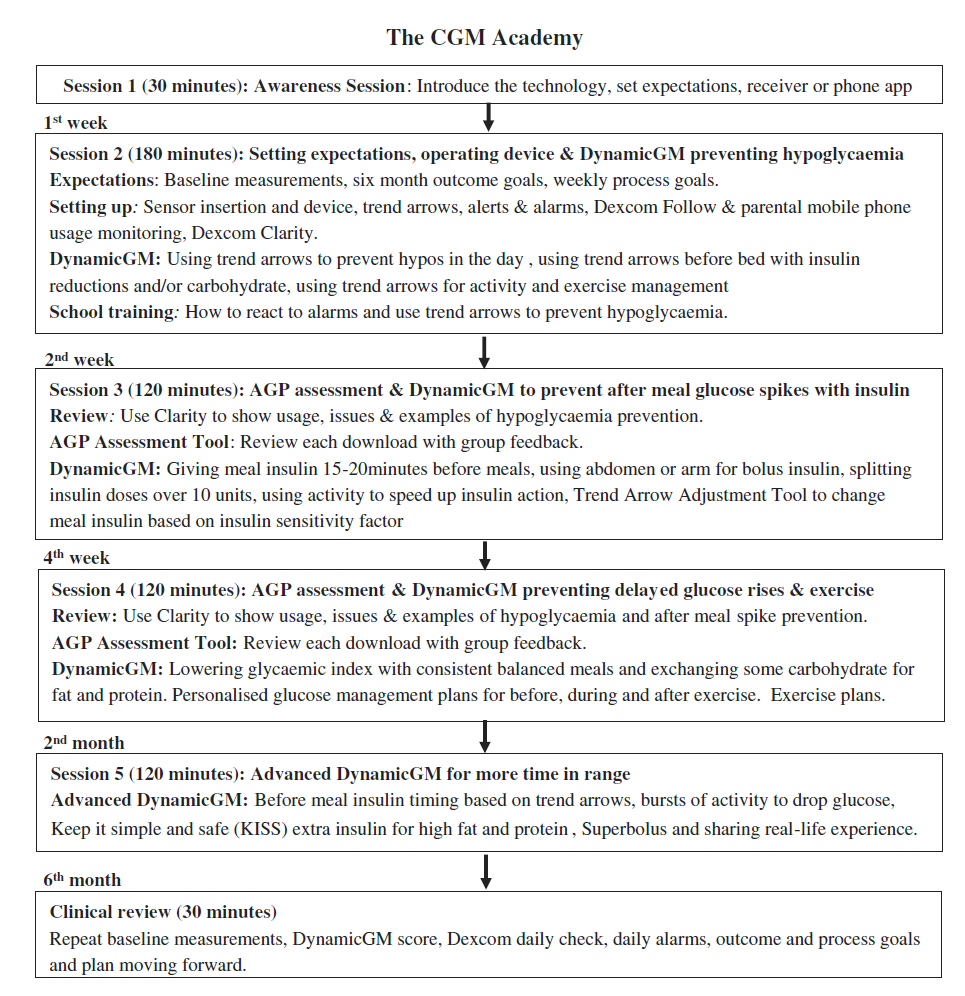
This figure shows all the education provided. Dynamic Glucose Management strategies were taught gradually over two months. We measured how proactive the children and young people were after six months using the Dynamic Glucose Management score below.
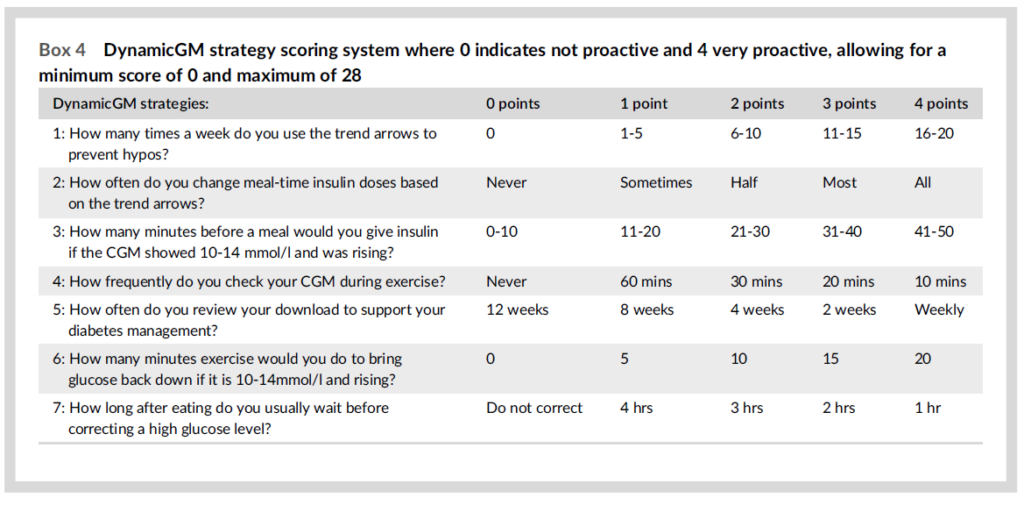
The results of the first fifty children and young people with type 1 diabetes educated in Dynamic Glucose Management
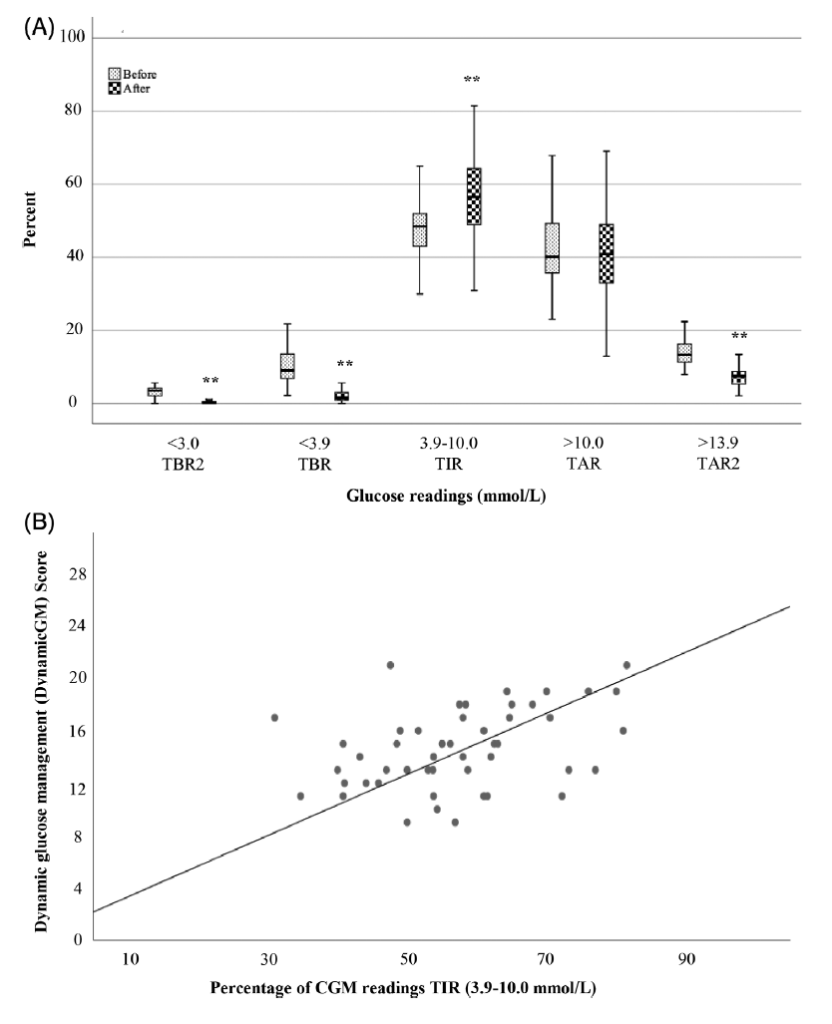
The top graph shows that time in all glucose ranges, except TAR (>10.0mmol/L or 180mg/dL) improved significantly six months after receiving the education. Also, severe hypoglycemia was almost eradicated. This suggests teaching Dynamic Glucose Management is effective.
However, the bottom graph is where the real action is. Our secondary analysis showed the strongest predictor of TIR (3.9-10.0mmol/L or 70-180mg/dL) was the Dynamic Glucose Management score. It basically showed the more proactive the higher the TIR. A score of 19 or above out of 28 almost guaranteed TIR of 70% or more.
We are soon to publish further work on the most effective strategies of Dynamic Glucose Management. However, you probably already know what they are if the have read through GAME-SET-MATCH.
Next Step: Mealtime Insulin Guide
Do you want to know when a new section of blog is added, click here.
